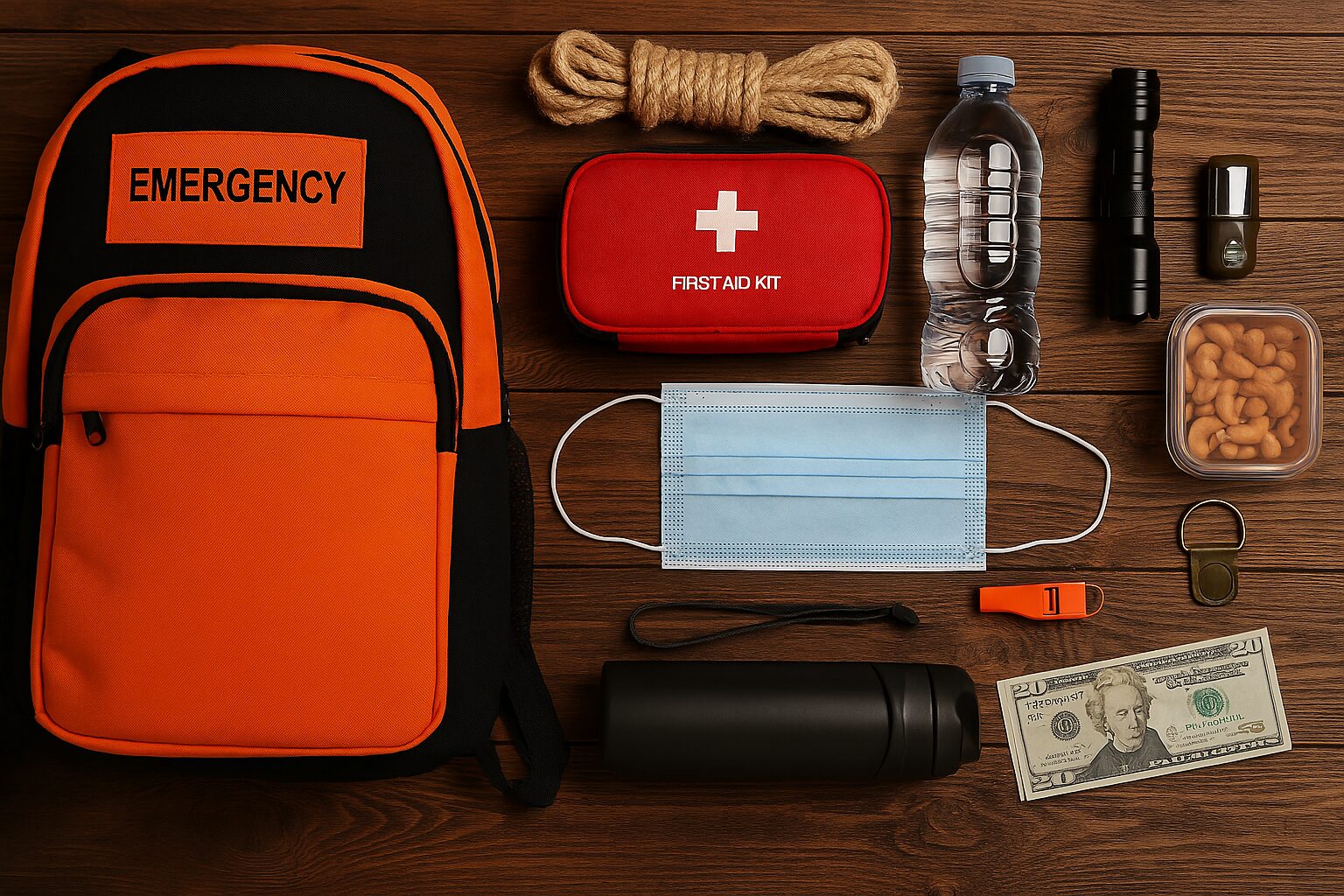Introduction: Why a Go Bag Could Save Your Life
Natural disasters, civil unrest, blackouts, or unexpected evacuations — emergencies don’t wait. That’s why every household should have a go bag — also known as a bug-out bag, emergency travel kit, or disaster go bag. It’s your grab-and-go survival kit packed with essential items to help you stay safe and self-sufficient for at least 72 hours.
Whether you’re looking to build your first tactical go bag or refresh your current emergency go bag checklist, this guide dives into what to pack, why it matters, and how to prepare efficiently.
What Is a Go Bag?
A go bag is a pre-packed emergency bag containing critical survival gear. Think of it as your personal emergency prep kit designed to get you out fast in the face of an evacuation or crisis.
It goes by many names:
- To-go bag
- Emergency grab bag
- Survival go bag
- Evacuation bag
- Prepper go bag
Essentials of a Well-Packed Go Bag
Here’s what to include in your go bag list to cover the basics of survival:
Water & Hydration
- Water bottles or pouches (1 gal/person/day)
- Water purification tablets or filter
- Waterproof go bag liner
Food & Nutrition
- Non-perishable energy bars
- Dehydrated meals
- Manual can opener
Medical Supplies
- Go bag first aid kit (bandages, antiseptics, painkillers, allergy meds)
- Prescription medications
- Emergency trauma supplies
Tools & Gear
- Flashlight with batteries
- Multi-tool or tactical knife
- Duct tape, rope, and paracord
- Tactical bag or hack bag organizer
Clothing & Protection
- Weather-appropriate clothing
- Space blanket or bivy sack
- Face mask and gloves
- Rain poncho
Communication & Navigation
- Emergency radio (hand-crank or solar)
- Whistle
- Printed emergency contacts
- Map of local area
Personal Items
- Copies of ID and important documents in a waterproof pouch
- Emergency cash
- Extra keys
- Hygiene items (toothbrush, soap, feminine products)
Go Bag for Every Situation
Every type of go bag serves a slightly different purpose. Here are variations you might consider:
Urban Go Bag
- Compact, blends into a crowd
- Focuses on communication, cash, ID, and transport
Wilderness Bug-Out Bag
- Heavy on navigation and food tools
- Includes survival knife and weather protection
Car Emergency Go Bag
- Stays in your trunk
- Ideal for breakdowns or evacuations on the road
Common Go Bag Mistakes to Avoid
Avoid these go bag packing errors:
- Overpacking: A bloated go bag can slow you down.
- Expired items: Review your emergency go bag contents every 6 months.
- Missing documents: Vital records are often forgotten.
- No customization: Your go bag checklist should reflect your needs (children, pets, climate, medical).
How to Prepare and Maintain Your Go Bag
- Label everything inside your bag to go for quick access.
- Store in an easily accessible location (closet, car trunk).
- Have a mini-version or lightweight go bag for mobility.
- Create a go bag packing list on your phone for reference.
Who Needs a Go Bag?
Everyone. But particularly:
- People in natural disaster zones (earthquakes, floods, fires)
- Urban dwellers with limited resources
- Travelers or expats (pack a travel safety kit)
- Anyone seeking peace of mind
Whether you call it a gobag, to go bag, or bug out bag, it’s a must-have.
Customize Your Emergency Kit
Here are ideas to tailor your go bag:
- Family kits: Include toys, formula, and comfort items for kids.
- Pet kits: Add leashes, food, and vaccination records.
- Tech kits: Solar charger, USB cables, backup batteries.
Even something as specific as a go bag for earthquake or california go bag can make the difference when disaster hits.
Conclusion: Pack Now, Thank Yourself Later
Having a well-thought-out go bag is not about paranoia — it’s about preparation. Emergencies strike without warning, and your bag can be the difference between safety and vulnerability. Don’t wait for a wake-up call to ask, “What should I pack in a go bag?”
Start today. Stay safe, stay ready.
Brought to you by The Inspiring Insight.




